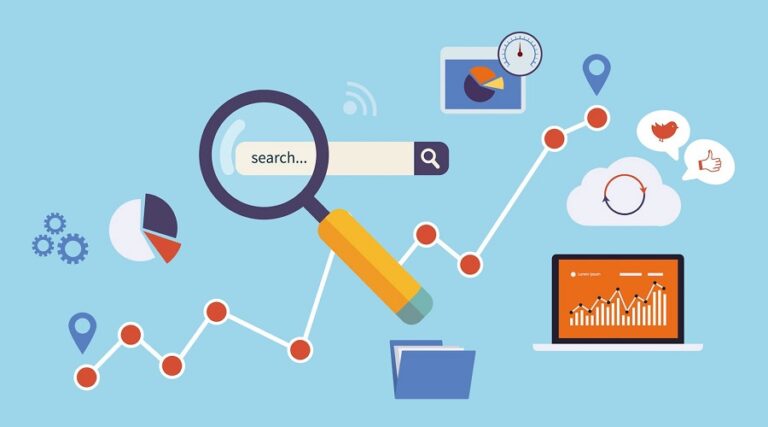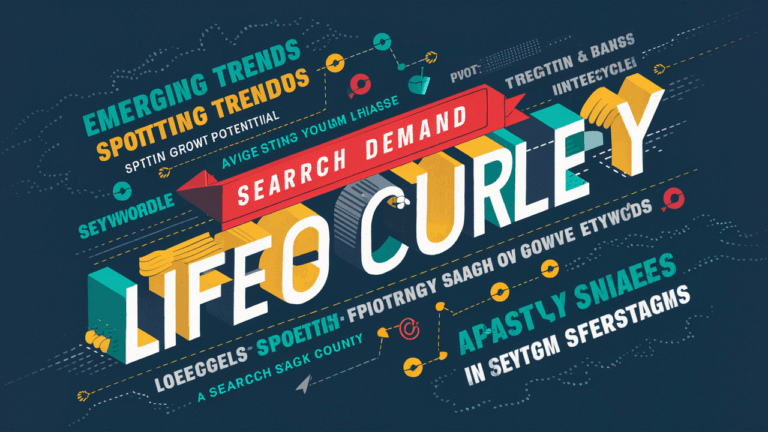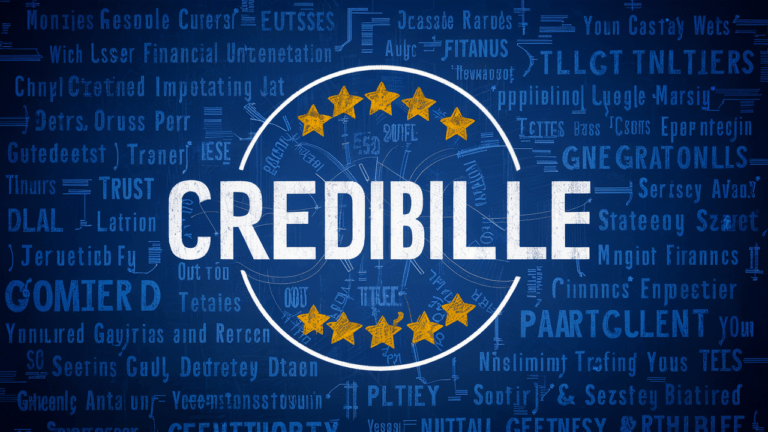How SEO & PPC Work Together to Drive Maximum Results?
Have you ever felt like SEO and PPC are the two opposite things in the digital marketing world? You’re not alone there. Many businesses treat them as two separate strategies. But in reality, they work even better together. SEO helps you rank organically while PPC is there to get you instant visibility.
Think about it: what would happen if you combined both these strategies? Their combined strengths will get you far better results than you can imagine. Keep reading this blog to learn how SEO and PPC can complement each other and get some actionable strategies to help you get the most out of both.
Understanding the Basics of SEO and PPC
Before we get into how SEO and PPC can work together, let’s quickly break down what they are and why they matter so much.
What Is SEO?
SEO which is known for Search Engine Optimization is all about improving your website’s visibility in organic search results. Think of it like building a strong reputation for the search engines that recommend your site among the top results. To optimize your site for the search engines, you create valuable content, optimize your site for keywords and earn backlinks. All of these actions help search engines better trust your site and rank it higher.
You might be wondering what the biggest advantage of SEO would be. It actually has a foundational role in bringing long-term and sustainable traffic. Once your pages rank well, they can continue to drive visitors for months or even years without you spending additional costs on them. But the catch is that SEO is not something that can do overnight magic. It demands patience as it might take weeks or even months to see significant improvements.
What Is PPC?
PPC or Pay-Per-Click is the shortcut to search engine visibility. Instead of waiting for organic rankings, businesses pay the search engines to appear in their top results instantly. Just as its name implies, every time someone clicks on your ad, you pay a fee for it.
But PPC isn’t about throwing money at ads and hoping for the best. It’s a highly targeted strategy where you can choose who sees your ads based on multiple factors. You can use location-specific keywords to target demographics with specific interests and behaviors.
Platforms like Google Ads and Bing Ads allow businesses to fine-tune their PPC campaigns with ad extensions, A/B testing and remarketing (where you show ads to people who’ve previously visited your site but didn’t convert). It makes PPC incredibly effective for:
✔ Getting immediate traffic – Unlike SEO (which takes time) PPC gives you results as soon as your ads go live.
✔ Testing new products or offers – You can quickly see what works and adjust your strategy.
✔ Launching promotions or seasonal campaigns – Perfect for sales, limited-time discounts or event-based marketing.
But its downside is that it can get expensive. Without any proper management, you could end up paying for clicks that don’t even convert into sales. With this, PPC requires constant monitoring and regular optimization of its campaigns.
How SEO & PPC Complement Each Other?
Many businesses make the mistake of choosing either SEO or PPC for their digital marketing. But the truth is, they work much better together. For instance:
- SEO is a long-term strategy while PPC delivers instant results. PPC can help you drive traffic while you’re building your organic rankings.
- PPC provides valuable keyword data. You can use PPC campaigns to identify high-performing keywords and integrate them into your SEO strategy.
- SEO and PPC together help dominate search results. Having both an organic listing and a paid ad increases your brand visibility and credibility.
- PPC can re-engage organic visitors. People who find your site through SEO but don’t convert can be retargeted using PPC ads.
Instead of treating them as separate strategies, think of SEO and PPC as two sides of the same coin. When both of these are used together, they create a powerful, balanced marketing approach that brings both immediate and long-term success.
Key Strategies to Combine SEO and PPC Effectively
Now that you know how SEO and PPC work individually, let’s talk about how they can work together and maximize your results. By strategically integrating them both, you can improve visibility and boost conversions by refining your marketing efforts.
- Use PPC to Test Keywords for SEO
Finding the right keyword for SEO can take months of trial and error. You optimize content and wait for the rankings to improve. And all the while you hope that the traffic converts. But wait a second. What if you could fast-track the process?
That’s where PPC comes in as a keyword testing tool. You can:
- Launch PPC campaigns targeting different keywords related to your business.
- Analyze performance metrics (click-through rate, conversion rate, cost per click).
- Identify high-performing keywords and integrate them into your SEO strategy.
For example, if you run an online fashion store, you might be unsure whether to target “affordable summer dresses” or “lightweight cotton dresses” in your SEO strategy. So instead of waiting for months, you can run short PPC campaigns for both and see which keyword drives higher conversion rates. The winning keyword will be your new SEO priority.
Integrating this keyword strategy can help you ensure you’re optimizing for the right keyword from the start. Plus, it’ll save you time and effort on rankings that might not convert.
- Maximize SERP Real Estate
Have you ever noticed how some brands dominate the first page of Google, showing up in both paid ads and organic results? That’s not just luck doing that! It’s actually a strategy.
By appearing in both PPC ads and SEO listing, you will:
- Boost Credibility: Users see your brand multiple times which enforces their minds to trust you.
- Increase Click-Through Rates: The more places you show up, the higher the chances of a click.
- Push Competitors Down: Less visibility for your competition means more business for you.
You might better understand this with the example of a fitness supplement store where you rank organically for “best protein powder”. But if you run a PPC ad for the same keyword, you would definitely double your presence. And this will increase the chances that searchers will choose your brand over others. And this approach works effectively well for:
- Highly competitive keywords – where organic rankings alone might not be enough.
- Branded searches – which make sure that your competitors don’t run ads against your name.
- New product launches – where PPC can generate buzz while SEO gains traction.
If you really want to own your SERP real estate, combining organic and paid strategies for better search visibility is the way to go.
- Align Messaging Across Channels
Let’s say a user clicks on your PCC ad promoting a “30% discount on designer sunglasses” but when they visit your website, the discount isn’t mentioned anywhere. Confusing, right? Anyone would get confused here!
That’s exactly why consistency is the key. Whether a user finds you through SEO or PPC, their experience with your business site should be seamless. To ensure this, you need to:
- Use the same keywords, tone and offers across SEO content and PCC ads (no matter if you run ads on multiple platforms).
- Align your landing pages with ad copy so users see exactly what they expect.
- Whether in organic blog posts or paid search ads, maintain a consistent brand voice.
For instance, if your PPC ad highlights “free shipping on all orders”, make sure this benefit is clearly stated on the landing page and with SE-driven content as well. This approach builds trust and improves conversions by reinforcing the same message across different channels.
- Leverage Remarketing for Organic Visitors
You have an excellent site and everything is aligned well. Even then not every visitor converts on the first visit. Sometimes, they need a gentle nudge to come back and purchase your services. And that’s where remarketing ads help you grow your business. Let me explain how it works:
- A user finds your site organically through SEO but doesn’t buy anything.
- They leave your site, but Google Ads or Facebook Ads track them.
- Later, they see a PPC ad reminding them about the product they viewed.
- They click the ad, return to your site, and complete the purchase.
All these things particularly work well with PPC campaigns if you have:
- E-commerce brands – you can remind users about abandoned products.
- Service-based businesses – offer a limited-time discount to buyers who seem hesitant to make a purchase.
- Lead generation – retargeting users who visited a landing page but didn’t sign up.
Let’s say you run an online travel agency and someone browses your SEO-optimized article on “best travel destinations”. Later, they see your PPC ad promoting a limited-time travel package deal. Since they already showed interest, they’re far more likely to click and book your travel package. Therefore, remarketing is one of the best ways to re-engage lost organic traffic and turn them into paying customers.
- Share Insights Between Teams
One of the biggest mistakes businesses can make is treating SEO and PPC as separate teams instead of collaborating. But combining their insights can make a huge amount of difference for both strategies. It’s because when SEO specialists and paid search marketers work together, they can unlock valuable insights that improve both strategies. For example:
- PPC insights improve SEO – If a paid search ad is driving tons of conversions that means the keyword is valuable. You can optimize blog posts or product pages for that term.
- SEO insights improve PPC – If an organic blog post is getting high engagement, running PPC ads for it can drive even more targeted traffic.
- Search intent data improves targeting – PPC campaigns reveal which keywords lead to actual sales, not just clicks. SEO can then prioritize content around these high-intent terms.
Businesses can ensure smooth collaborations by making SEO and PPC teams work together. Setting up regular data-sharing meetings and using shared analytics dashboards (Google Analytics, SEMrush and Ahrefs etc.) can help teams to work together to maximize results. Plus, you also need to align messaging consistency between PPC ad copy and SEO content.
- Boost High-Performing Content with PPC
Some SEO content naturally performs well. If your SEO efforts have already produced high-ranking content then why not increase its reach with PPC ads? Instead of waiting for organic traffic to slowly build up, PPC can give instant visibility to your best content. For say you wrote a blog post and it’s already ranking organically and bringing in traffic, running a PPC ad to promote it further can:
- Increase traffic instantly while you’re already waiting for organic ranking to grow.
- Reach a larger audience who may not have found it otherwise.
- Generate more leads and conversions from a highly engaged audience.
This approach would be a perfect fit for you if you want to use PPC and for your SEO content. There are different ways you can boost your content. For instance, you can:
- Promote evergreen blog posts that educate users and build brand authority. If a blog is already performing well in SEO, you can use PPC to push it even further.
- Run PPC ads for lead generation content. If your SEO strategy includes free guides, eBooks or webinars, running PPC ads drives more sign-ups and conversions.
- Target competitor keywords. If one or two of your competing brands are ranking highly for a specific keyword then PPC ads can further help you capture traffic from their audience as well.
When you combine SEO’s long-term visibility with the instant results of PPC, it will definitely help your business drive sustained traffic growth and maximize your business. So, instead of waiting for organic traffic to grow slowly, you can use PPC to accelerate results and bring in immediate engagement.
- Use PPC Data to Optimize SEO Campaigns
PPC is like a goldmine of data as SEO teams can use it to fine-tune their content strategy. So instead of relying only on the guesswork, businesses can use PPC performance metrics to optimize their SEO campaigns for higher rankings and conversions. Integrating PPC data in SEO strategy will definitely help you gain top SERP rankings. Using PPC campaigns, you can:
- Find high-performing keywords and prioritize them in your content strategy.
- Improve SEO content structure by analyzing high-performing PPC landing pages with certain headlines or call-to-action phrases.
- Understand user intent better and adjust your SEO content formats accordingly.
These multiple aspects might seem quite difficult to understand at first but they’re just a piece of cake. You can use some key metrics to identify the performance and help in SEO:
- PPC Click-Through rate (CTR) data can reveal which keywords are truly engaging users.
- PPC Conversions rates can indicate which landing pages and content types are working best.
- Bounce Rate can provide insights that can help SEO teams refine page structure and content strategy.
- High-performing PPC ad headlines can be repurposed as SEO meta titles.
In this way, PPC analytics can help businesses shape their site with SEO content. With this, they’ll be able to target the right audience, improve search rankings and drive higher conversions.
- Leverage SEO Web Design
A well-designed website isn’t just important for SEO rankings. It also plays a huge role in making your PPC campaigns successful. If you’re going for digital marketing, you must know that if your website is slow, confusing, or unoptimized, even the best PPC ads won’t convert visitors into customers. And just like that, you can also leverage this aspect to maximize your conversions. You can combining SEO-driven web design with PPC efforts to create a seamless user experience. And it will ultimately boost engagement and conversions.
Some of the best practices that you can use for SEO Web design and PPC integration are:
- Ensuring fast-loading pages by optimizing images, reducing unnecessary code, and using caching.
- Using clear CTAs on PPC landing pages to encourage conversions (e.g., “Get Your Free Quote” instead of “Learn More”).
- Implementing internal linking to improve both SEO rankings and help PPC visitors navigate the site smoothly.
- Maintaining consistent branding & messaging across organic and paid campaigns to create a seamless experience.
Imagine you run an e-commerce store where you sell handmade jewelry. Your PPC ads might drive traffic to a landing page for custom gold necklaces. But if your page is slow, cluttered, or lacks a clear CTA, your visitors will leave getting confused, without even making a purchase.
And if you apply SEO web design principles on your site, such as:
✔ Improving page speed for faster load times,
✔ Using a clean, mobile-friendly layout,
✔ Adding engaging product descriptions & trust signals (reviews, badges, etc.),
…you’ll be creating a landing page that not only boosts your site’s PPC conversions but also improves your organic search rankings measurably.
Common Challenges in SEO and PPC Integration
Now that you know all the multiple key strategies to integrate SEO with PPC and you might be thinking bringing SEO and PPC together sounds like a dream marketing strategy, right?
More visibility, more clicks, and better results!
But just like any other powerful strategy, there are a few challenges that can get in the way. If SEO and PPC teams don’t work in sync, businesses may waste budget, miss opportunities, or struggle to measure success. Some of the biggest roadblocks that you might face are:
- SEO & PPC Teams Don’t Communicate: SEO focuses on organic growth, while PPC aims for instant results. If your specialist teams don’t share insights with each other, both strategies can suffer. To fix this you can:
- Set up regular check-ins between SEO and PPC teams.
- Use a shared dashboard to track data together.
- Align keywords and audience targeting across both channels.
- Competing for the Same Keywords: Bidding on keywords that you’re already ranking for can waste your money instead of adding value. Therefore you need to:
- Focus PPC on high-intent or competitive keywords, not just those you rank for organically.
- Let SEO handle evergreen content, while PPC targets seasonal or short-term wins.
- Tracking Is All Over the Place: SEO and PPC, both these strategies use different metrics. One tracks rankings while the other one tracks ad clicks. If you don’t align your data accordingly, you might lose clarity on what’s working. To better data tracking you can use:
- Use Google Analytics to track SEO and PPC together.
- Set shared goals like conversions, ROI, and engagement.
- Compare organic vs. paid performance regularly.
- Budget Conflicts: Should you spend more on SEO for long-term gains or PPC for quick wins? Many businesses struggle to find the right balance. To know the answer to what is the best strategy for you, you must:
- Use PPC to support SEO while rankings improve.
- Boost high-converting SEO pages with targeted PPC ads.
- Adjust budget based on performance and ROI.
- Landing Pages Don’t Match: If someone clicks a PPC ad expecting a product page but lands on a generic homepage, they’ll definitely bounce. Therefore, you need to address this issue:
- Make sure PPC ads lead to SEO-optimized landing pages.
- Keep messaging, CTAs, and design consistent.
- Optimize for fast loading, mobile-friendliness, and relevance.
Combine SEO & PPC Efforts And Gain Maximum Benefits With DigiDream
SEO and PPC aren’t competing strategies, but they’re actually stronger together. SEO builds long-term trust, whereas PPC at the same time delivers instant visibility. When both these approaches are combined, they help businesses dominate search results and maximize conversions.
At DigiDream, we specialize in creating seamless SEO and PPC strategies that work hand in hand with each other. So, whether you need faster results, long-term growth, or both, we’ve got you covered. Contact us today and let’s partner to boost your digital success together!








